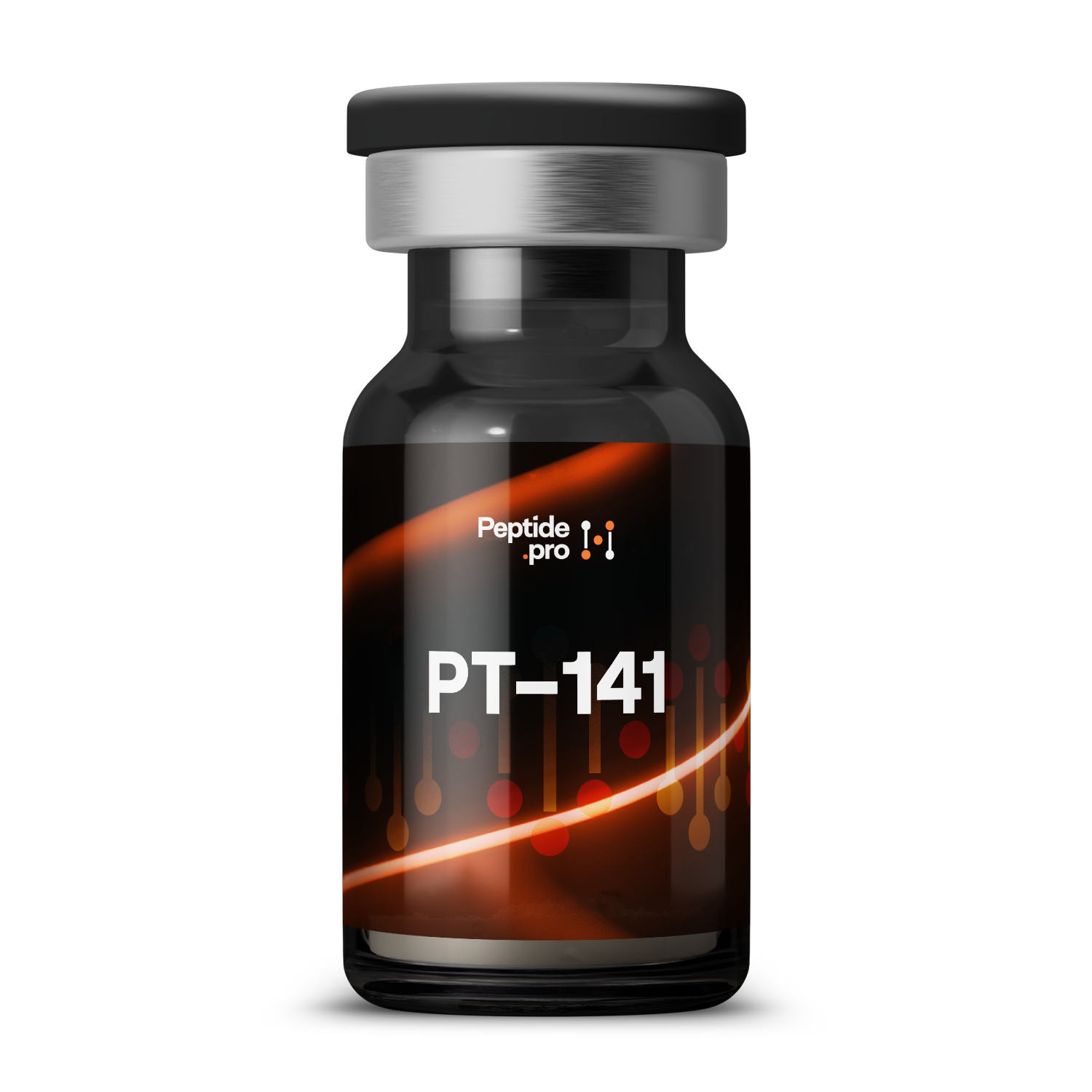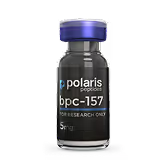PT-141
PT-141 is a seven–amino-acid peptide that stimulates brain pathways to increase sexual desire. When injected, it quickly activates receptors linked to arousal without affecting skin pigmentation. In studies, PT-141 has been shown to boost sexual interest and improve satisfaction in women experiencing low libido.
Compound Overview
About the product
The molecule is a cyclic heptapeptide with an N-terminal acetyl group and C-terminal amide, featuring a lactam bridge for stability and receptor selectivity. It contains only natural amino acids and a single methylated tryptophan to enhance potency. Manufacturing employs solid-phase peptide synthesis, preparative HPLC purification to >98 % purity, and mass-spectrometry confirmation.
PT-141 binds selectively to central melanocortin-4 receptors (MC4R), modulating neural pathways that regulate sexual desire and arousal. It does not target MC1R, avoiding effects on skin pigmentation. Receptor activation leads to signaling cascades that enhance sexual motivation and response. Clinical pharmacology shows measurable central receptor engagement within an hour of subcutaneous administration.
The peptide is indicated for treating HSDD in premenopausal women. In pivotal trials, a single 1.75 mg dose significantly increased sexual desire scores and satisfying sexual events compared with placebo. Patients also reported reduced distress related to low sexual desire. Its rapid onset and on-demand dosing offer an alternative to daily hormonal therapies.
Common PT-141 side effects include nausea, flushing, headache, and injection-site reactions. Transient elevations in blood pressure and reductions in heart rate have been observed, so vital signs are monitored. It is contraindicated in patients with uncontrolled hypertension or cardiovascular disease. Safety in pregnancy, lactation, and men has not been established.
PT-141 is synthesized via Fmoc solid-phase chemistry on a resin, including on-resin cyclization to form its lactam bridge. After cleavage and deprotection, the crude peptide is purified by preparative HPLC to clinical-grade purity. Quality control employs analytical HPLC and mass spectrometry to verify identity, purity, and correct disulfide pairing where applicable.
Bremelanotide (Vyleesi) is approved by the U.S. FDA for HSDD in premenopausal women and by comparable agencies in several regions. It is available by prescription only and cannot be obtained over the counter. Off-label uses are not supported by regulatory approval. Distribution is restricted through certified specialty pharmacies.
PT-141 dosage is typically 1.75 mg administered subcutaneously at least 45 minutes before anticipated sexual activity, not to exceed eight doses per month. Doses must be spaced at least 24 hours apart. No loading dose is required, and repeat administration should follow the approved schedule.
- Do follow the six-dose monthly limit and 24-hour spacing to reduce side-effect risk.
- Do check blood pressure before and after dosing.
- Don’t use if you have uncontrolled hypertension or cardiovascular disease.
- Don’t give to men or postmenopausal women, safety and efficacy are untested.
- Q: How quickly does it work?
- A: Onset of increased desire occurs within about one hour of injection.
- Q: Can it be used daily?
- A: No; the maximum is eight doses per month, with at least 24 hours between doses.
- Q: Is it effective in men?
- A: It is not approved for men, and no efficacy data are available in male populations.
For research use only. Not approved for medical use.


